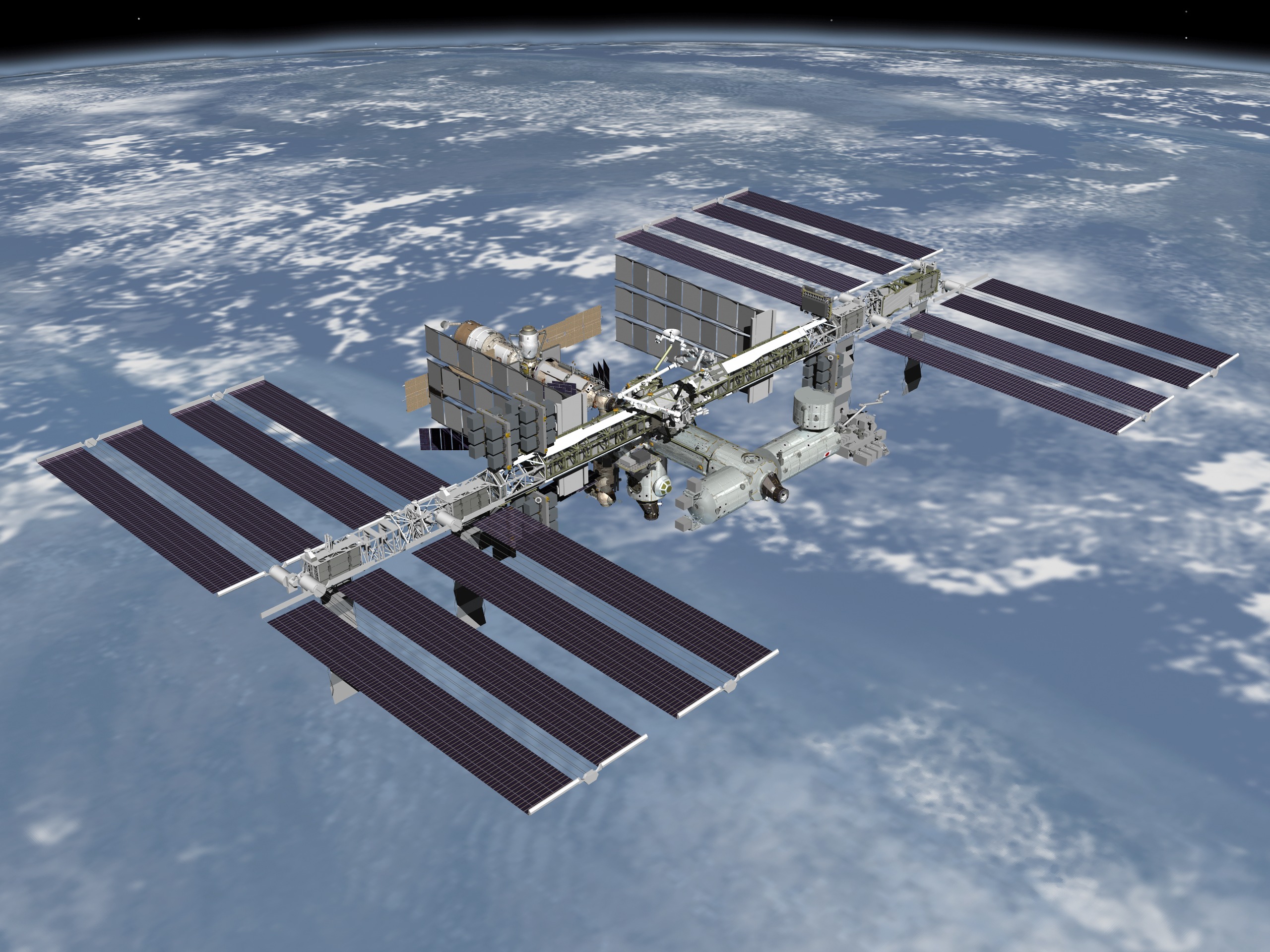
For the third week in a row, the week’s real lead space story got its own entry. This week, it was Russian meteor one year later. However, some story has to get featured, so I’ll be a good environmentalist and recycle one of the leads from ISS extended and dead stars in this week's space news.
NASA: ScienceCasts: 10 More Years
With the space station no longer "under construction," the world's most advanced orbital laboratory is open for business. The station has just received a 10-year extension from NASA, giving researchers the time they need to take full advantage of its unique capabilities.Follow over the jump for more from NASA and Space.com.
NASA: New agreement signed on This Week @NASA
NASA Administrator Charles Bolden and Jean-Yves Le Gall, President of France's National Center of Space Studies or CNES, signed an agreement for cooperation on the lander for NASA's future InSight mission to Mars. InSight will probe deep into the subsurface of Mars to understand the evolutionary formation of rocky planets, including Earth. A CNES instrument onboard the lander is designed to measure seismic waves -- which provide clues about the earliest stages of the planet's formation. InSight is scheduled to launch in March 2016 from Kennedy Space Center. Also, Congressional hearing at KSC, Senator sees Langley tech, Future ISS crew announced, Project Morpheus test and Tech transfer awards.Next, Space.com has the first of two planetary science stories with Jupiter's Moon Ganymede - First Global Geologic Map Revealed | Video.
Surface features, such as furrows, grooves and impact craters are illustrated on this 360 degree view of the moon. The best imagery from NASA's Voyager 1 and 2 and Galileo spacecrafts were used to create it. Galileo Galilei discovered it in 1610.Also see the accompanying article.
The largest moon in the solar system has finally received its cartographic due.Finally, although there have been reports about Opportunity and Curiosity this year, there haven’t been any reports from JPL on the mission this year--until now: NASA Mars Curiosity Rover Report -- February 14, 2014.
Scientists have created the first global geological map of Jupiter's huge, ice-covered moon Ganymede, more than 400 years after its discovery by Galileo Galilei. The map, created using observations by NASA's twin Voyager probes and Galileo orbiter, highlights the varied terrain of Ganymede, which is bigger than the planet Mercury.
"This map illustrates the incredible variety of geological features on Ganymede and helps to make order from the apparent chaos of its complex surface," Robert Pappalardo, of NASA's Jet Propulsion Laboratory in Pasadena, Calif., said in a statement. "This map is helping planetary scientists to decipher the evolution of this icy world and will aid in upcoming spacecraft observations."
A NASA Mars Curiosity rover team member gives an update on developments and status of the planetary exploration mission. The Mars Science Laboratory spacecraft delivered Curiosity to its target area on Mars at 1:31:45 a.m. EDT on Aug. 6, 2012 which includes the 13.8 minutes needed for confirmation of the touchdown to be radioed to Earth at the speed of light. The rover will conduct a nearly two-year prime mission to investigate whether the Gale Crater region of Mars ever offered conditions favorable for microbial life.That’s it for last week’s non-asteroid, non-Olympics space news. Yes, that means there will be an entry that features both of those topics. Stay tuned.
Curiosity carries 10 science instruments with a total mass 15 times as large as the science payloads on NASA's Mars rovers Spirit and Opportunity. Some of the tools, such as a laser-firing instrument for checking rocks' elemental composition from a distance, are the first of their kind on Mars. Curiosity will use a drill and scoop, which are located at the end of its robotic arm, to gather soil and powdered samples of rock interiors, then sieve and parcel out these samples into the rover's analytical laboratory instruments.
No comments:
Post a Comment